This fourth episode of our series about historically significant British drum brands now moves to the big one, Premier, and is a necessarily concise view of a company with a long and complicated history. Premier celebrated its centenary in 2022 and is today owned by the UK online retail site Gear4music.
Premier was founded in London by Albert Della-Porta and George Smith. Albert was 19 and George 21 in March 1922 when the pair first hatched their plan to break away from the Boyle drum company where they were both employed, George as foreman.
They signed a partnership agreement that October and leased a small basement workshop at 47 Berwick Street in Soho, central London (not far today from where Ronnie Scott’s jazz club resides). Albert’s 17-year-old brother Fred helped out with the petty-cash book and orders. Once the business got going, after a couple of touch-and-go years, Fred came on board full time.
If Albert had put his Italian family name on his drums, then Della-Porta would be as famous as Ludwig, Gretsch, Rogers, or Slingerland. Instead, Albert wanted his drums to be the best: the Premier choice.
Like William Ludwig, Albert knew what he was talking about. He was a jobbing drummer around London’s West End, and he set about persuading his drumming colleagues to invest in his gear.
The Premier Drum Company’s manufacturing shifted to larger premises in Silex Street, near Waterloo rail station, in October 1925. Three years later, aided by extra finance from hotelier friends of the Della-Porta family, a limited company was formed. By 1932, Premier was able to build a new factory on the major Park Royal trading estate in north-west London. Business boomed and the factory was extended regularly.
Premier expanded into making brass, woodwind, and military band instruments, like several of its rivals, including Rose-Morris and Boosey & Hawkes. In 1935, it swallowed up the Manchester-based brass instruments firm Joseph Higham and even produced a Rickenbacker-licensed early solidbody electric guitar.
War Work and Revival
The arrival of World War II put the brakes on all this. In 1939, the drum market stalled and Premier joined the war effort, winning a contract to supply brass plugs and sockets for aircraft radar components. In September 1940, the Premier factory was completely destroyed during a German air raid. Albert and George had barely two weeks to resume supply or forfeit their contract.
They succeeded by using a makeshift workshop while they sought safer premises outside London, settling on a rundown Victorian foundry in Canal Street, South Wigston, 100 miles to the north in Leicestershire. A loyal cadre of the 60-strong London workforce tagged along, and Wigston became Premier’s home.
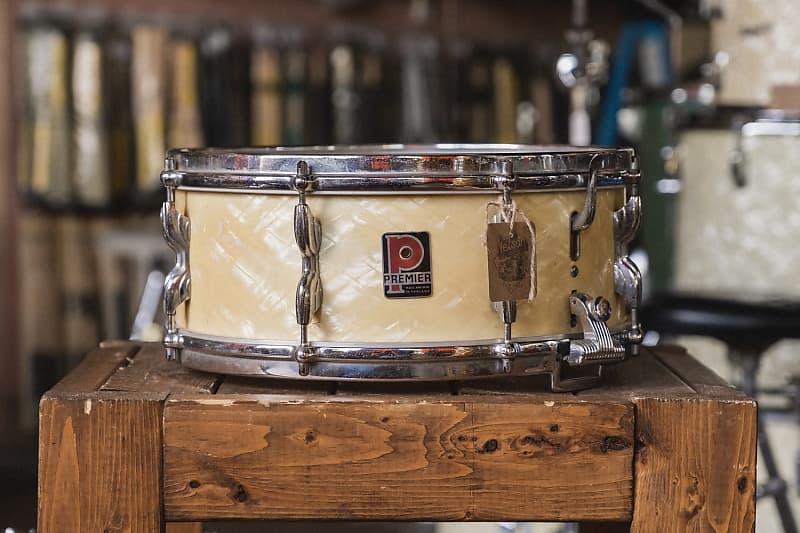
Premier continued its war drive, making gun sights for artillery deployed in the pivotal battles of 1942 at El Alamein in Egypt. From 1946, a revitalized Premier returned to Albert’s first love—making percussion instruments exclusively.
The factory’s war work had entailed greater accuracy all round than that required to knock up a ‘30s drum kit, and aid from the government had enabled Premier to buy better machinery. Starting with fine-thread brass work, Premier later became dab hands at die-moulding and the casting of zinc-alloy components.
Albert’s eldest son, Clifford, took an engineering degree and joined the company at this time to set up a research and design department. Initially guided by Albert and George Smith, Clifford and his somewhat geeky crew would be responsible for Premier’s innovative designs.
From 1947, Premier kits stood out by virtue of their fluted Art Deco flush-bracing lugs. The logic was that these full length die-moulded brackets would reduce the stress which is placed on a shell when the more usual separate lugs are fitted to each end.
The other arresting visual difference was the stands, which had fold-flat bases, again made from solid die-moulded components. These two features were enough to make Premier look quite unlike any American kit of the era.
They were beautiful instruments featuring thin three-ply birch shells with one-piece beech reinforcing-rings, and further distinguished by die-cast hoops (sleeker than those of Gretsch), quirky single-lever bass drum tension rods, rubber-moulded steel footplates, and much else.
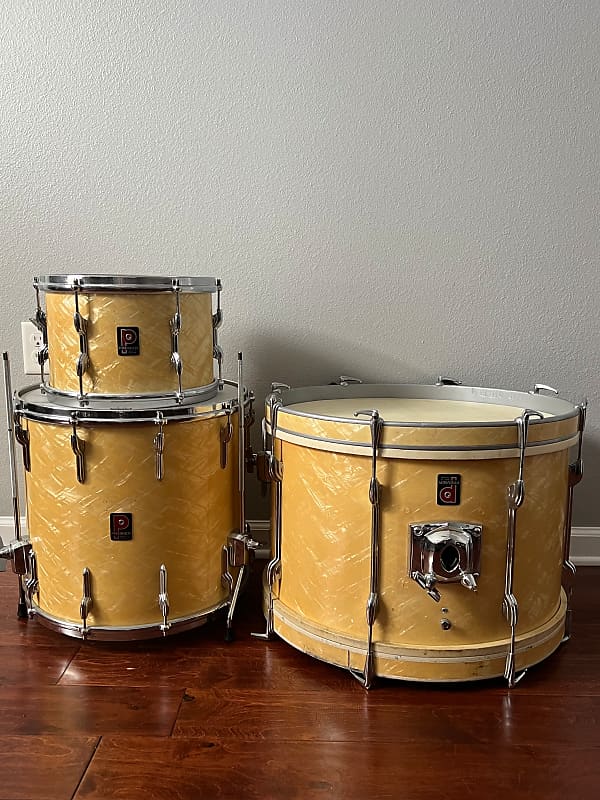
Premier’s proud aim was to be self-sufficient, making everything possible in-house, from orchestral tuned percussion, to Everplay plastic heads, to three cymbal lines: Krut, Zyn, and Super Zyn. Premier even had its own plating plant, and Diamond Chrome became a byword for the best.
Soon every club, pub, and theatre up and down the UK hosted Premier devotees. Premier had been the automatic choice of the new rock generation: Ringo Starr, John Steel (Animals), Bobby Elliott (Hollies), Mitch Mitchell (Hendrix), and of course Keith Moon with The Who. Premier even won over the occasional discerning American, such as Buddy Holly’s Jerry Allison.
Drummers often started out on the budget Premier range called Olympic, first launched in 1937, which was a cut above other makers’ starter kits. Many later British stars cited Olympic as their first decent drums, including Roxy Music’s Paul Thompson, U2’s Larry Mullen, and Bill Bruford who even played them in his early Yes days.
Perhaps most impressive was the A-list roll call of American jazz stars, including Kenny Clarke, Philly Joe Jones, and Sam Woodyard, the Duke Ellington orchestra’s drummer who played an early double-kick Premier kit.
Highs and Lows
Despite this clear lead in the home market, desirable American drums were finally now available in the UK. Ringo swapped to Ludwig. Loaded with money, at last, many successful UK drummers joined him. The image of all the British drum brands was suddenly and rather unfairly relegated to the dowdily old-fashioned.
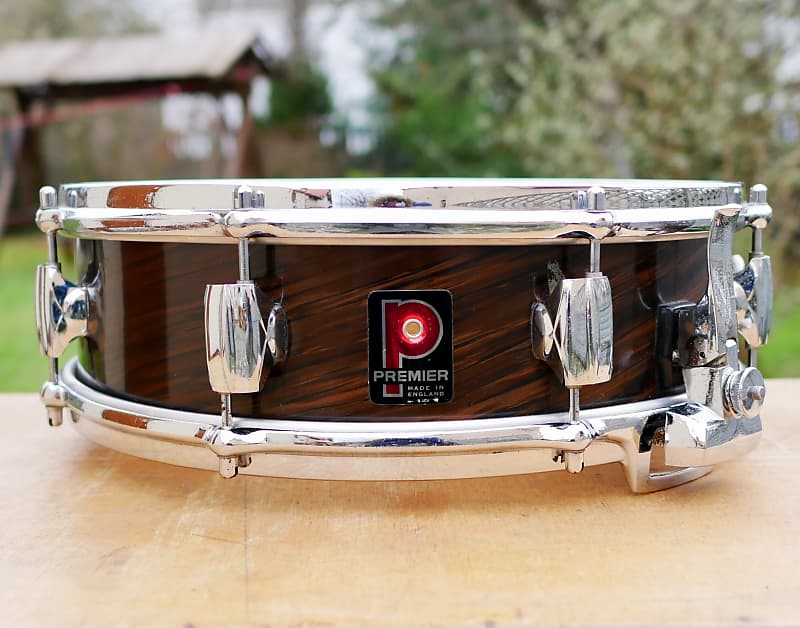
Premier’s shortcomings were exposed by ever-louder rockers. The early-‘60s spurs and tom mounts were inadequate, and the standard drum shell sizes were 20-inch/12-inch/16-inch. The 22-inch/13-inch/16-inch of Ludwig’s Super Classic was louder and fatter—aided by Ludwig or Remo heads, where Premier’s own Everplays were thin and pingy.
Thus the shortlived Beat Boom saw mounting competition for Premier. And at its height, in December 1965, Albert Della-Porta died, tragically young at just 62. George Smith had retired in 1958 due to poor health. Albert’s sprightly brother Fred assumed the chairman’s role and Albert’s sons—Clifford, Raymond, and eventually Gerald—sat alongside him on the board.
Premier now had some serious catching up to do. Inexplicably, they would not make a 13x9 tom until 1971. The alternative 14x8 tom, conveniently made alongside snare-drum shells, was an awkward size that most drummers did not take to. The exception being Keith Moon, who had three.
Then Premier had another not inconsiderable problem. This was the actual shell diameters, which until 1968 were what we now call "pre-international," so that standard American heads would not fit Premier’s 12-inch and 16-inch toms. (Remo today supplies special-order pre-international sizes for vintage kit owners, although the 12-inch is still a tight fit.)
Stung into action, Premier in 1968 changed to "international" diameter shells and addressed its hardware’s shortcomings. The second generation mid-‘70s Lokfast hardware was a great step forward, with its ubiquitous 391/392 blockbuster tom mounts. And the 2000 snare drum was the summit of the company’s intricate parallel, floating Flobeam snare technology.
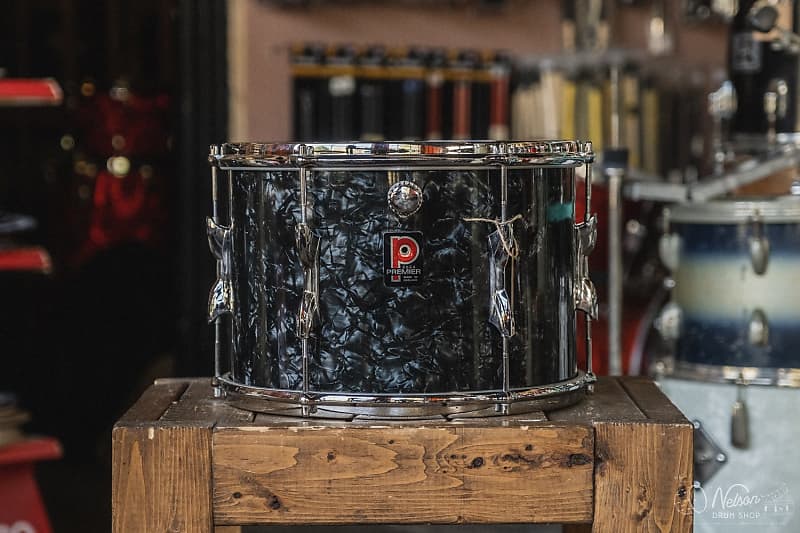
Premier was looking sharp again. But in order to maintain this position, it needed to move on from its several aging and widely dispersed facilities. A fabulous and completely new factory was built in Blaby Road, Wigston, and by 1976 virtually every department was rehoused under its single roof.
Beverley and Hamma
Included under that roof was Beverley Musical Instruments. Beverley was even older than Premier, founded in 1905 in the East Yorkshire town of the same name. Beverley had fabricated steel consoles for Premier in the ‘30s, but Albert Della-Porta purchased Beverley Instruments in the late ‘50s largely because Beverley dominated the schools music-stand market.
Premier would later build Beverley drums in Wigston, although Beverley was run as a separate business and allowed to go its own way with designs. This led to a significant deviation in the Premier story.
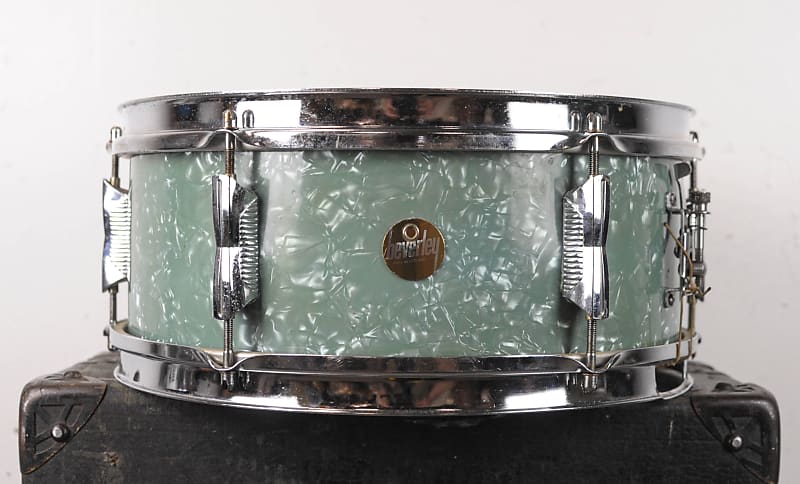
Beverley’s 1964 catalogue boasts "American style drums" across its front cover. As such, its kits were the first post-war Premier-made kits with separate lugs and ten-lug bass and snare drum—the Ludwig Supra-Phonic influenced Cosmic 21. This was contrary to Premier’s approach, and when Boosey & Hawkes ceased making Ajax drums around 1970, Premier supplied B&H with Beverley drums to badge and market.
By 1978, the excellent Beverley 8000 series was sold as the Premier 8000 in North America. And when Premier finally terminated Beverley drums soon afterward, this design became the Premier Projector series, heralding the gradual demise of the flush-bracing look.
Aside from Beverley, Premier also made Hamma drums for Rosetti-EMI in the mid to late ‘70s. And as we saw with Shaftesbury in the previous episode of this series, Beverley and Hamma went for single-color metallic wraps in the end—a nod to the sizable impact that Hayman had made.
Yamaha to the Rescue
Despite all this diverse activity, Premier itself was sinking into ever-deeper trouble. Selmer, Premier’s North America distributor, dropped Premier in favor of Ludwig in 1981, which was a cruel blow. And back in the UK, there was a wholesale depletion of Britain’s historic manufacturing base as cheap Japanese imports multiplied.
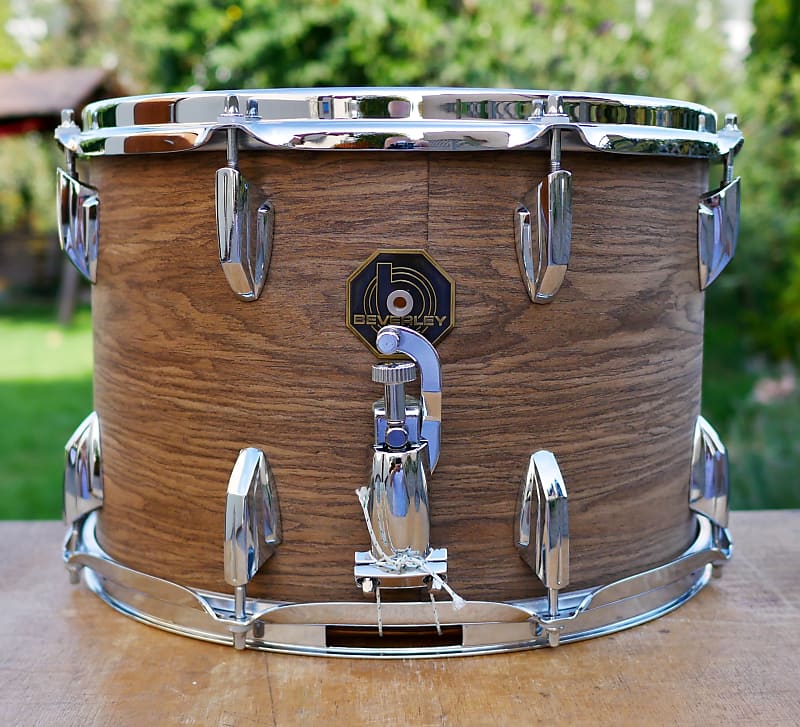
The Della-Porta brothers gave it their best shot, but the odds were massively against them. In 1983, they were ousted when their company was taken into receivership. A valiant team of erstwhile department managers were granted a buyout in April ’84, but they were underfunded and thwarted in their determination to stay afloat. In October ’87, the Japanese giant Yamaha came to the rescue, looking for a base in Europe and finding Premier ideal.
Without Yamaha’s intervention—which also was predicated on the fact that Premier had its own major factory—Premier would most likely have gone the way of Ajax, R-M, Carlton, Hayman, and the other defunct British brands. Yamaha invested millions installing modern equipment. Premier staff were able to make shells much faster and use better finishing processes to produce Yamaha kits alongside Premier’s own.
It seems that Yamaha behaved extraordinarily decently, withdrawing from Europe in 1992 and leaving Premier intact and owing nothing. With the Della-Portas and Yamaha now history, Premier’s image would change drastically and forever. But that is a very big story for another time.
About the author: Geoff Nicholls is a musician, author, journalist, and lecturer based in London. He played drums on BBC2 TV's award-winning Rockschool in 1984 and 1987 and wrote Byte The Music for BBC Radio 3, which won first prize at the New York Radio Festival in 1994. For the past 25 years he has been researching in depth the story of the Premier Drum Company, the results of which he intends to publish in the near future. His books include The Drum Book: A History Of The Rock Drum Kit (2007) and The Drum Handbook (2003), and he is a regular contributor to Rhythm magazine.
